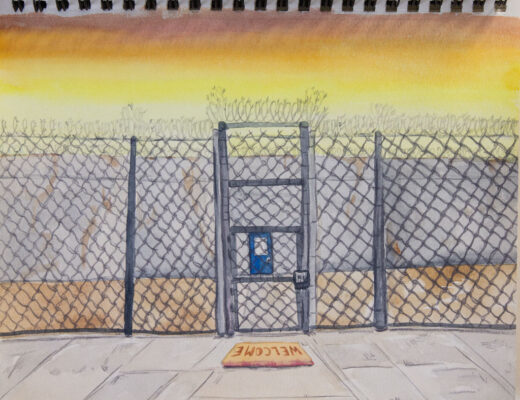Working as an art therapist in a jail, this blog intended to give life to the things I have witnessed. At this moment, my freedom feels trapped. The initial direction at the jail was to collect images at the end of each session to use again with patients. As a parting gift, I even thought the portfolio could be returned as inmates exited the facility. Unique to art therapy practice, images become a physical reminder of the therapeutic process. In the closure phase, patients can review their images to see their growth and further instill learnings and to consider future goals.
Close Management of Images
Images must be protected from misuse according to the Art Therapy Credentials Board Code of Ethics, Conduct and Disciplinary Procedures (2021, March). Since images are considered confidential, any use must be discussed with the patient with signed consents obtained. From the Tallahassee Democrat article, “Art doesn’t lie,” stated Dr. Gussak, PhD, ATR-BC reflecting from his extensive work with aggressive and violent offenders (Brown, 2019, July 13). Most important, images are to be respected, a “birthing” made from an individual engaging with the therapeutic process. Since every person is unique, so too, the marks on the paper must be viewed from the perspective of the person.
On the other hand, art in jail can be used as a weapon to physically or emotionally hurt or extort others. Images returning back to the dorm could be viewed with pride or seen as an open wound left to the interpretation of other inmates. In an environment where it is safest to “stick to yourself,” images from group therapy may have some unintended risks.
Wrestling with Security
From a report on national jail statistics, the average length of stay is 26 days with a 53% turnover rate according to the Department of Justice (2021). With limited space and no notice when someone is released or transferred, I realized retaining the images was futile. Further, security required the images to be collected at the end of each session. In the best interest of the patients, I determined it was best to inform the group participants the images would be collected and not maintained in records (that is, images were shredded.)
Dealing with Loss
With so much deprivation behind bars, I recognized the images could be just another reminder of loss. This topic opened group discussion about the impermanence of things; acceptance for what we can or cannot control; mixed feelings about loss; and building trust in this group process in an imperfect, changing place.
The Executioner
With no hesitation, shredding the images was difficult and sad for me. I witnessed each image as I carefully inserted the creations into the slot of the paper shredder. In my response art, I created a poem and image, “Life Noise”:
“Life Noise”
I want to love them all
They all have a chance
Each worthwhile journey, a dance
Entertaining each and balancing all
Can create quite the crash & fall
Each came with honest intentions
Begging for my needed attention
A hum and a noisy creation
Ego-guised, lost concentration
As mind filled to the brim
Oh how I want to love all of them.
Art Therapist with Conviction
In reflection, I recognized my own worry as the images quickly stacked up. I saw my own sadness and loss as the executioner by shredder. Yalom (1989) imparted his clinical assumption that “basic anxiety emerges from a person’s endeavors, conscious and unconscious, to cope with the harsh facts of life, the ‘givens’ of existence” (p. xii). With gratitude, art has revealed a truth for me this day: my attachment to images. From the poem, I read this line again: “I want to love them all.” Of course I do. Images powerfully exalt meaning making over the course of a lifetime, quite the parting gift.
References
Art Therapy Credentials Board. (2021, March). Code of Ethics, Conduct and Disciplinary Procedure [PDF file]. Retrieved from https://www.atcb.org/resource/pdf/ATCB-Code-of-Ethics-Conduct-DisciplinaryProcedures.pdf
Brown, M. (2019, July 13). Professor’s discoveries: Art behind bars springs art from the heart. Tallahassee Democrat. https://www.tallahassee.com/story/life/2019/07/13/professors-discoveries-behind-bars-springs-art-heart/1713435001/
Department of Justice. Office of Justice Programs. Bureau of Justice Statistics. (2021). Jail inmates in 2019 by Z. Zeng and T. Minton. Washington DC: Bureau of Justice Statistics. Retrieved from the Bureau of Justice Statistics Web site: https://www.bjs.gov/content/pub/pdf/ji19.pdf
Yalom, I. D. (1989). Love’s executioner and other tales of psychotherapy. New York: Basic Books.




